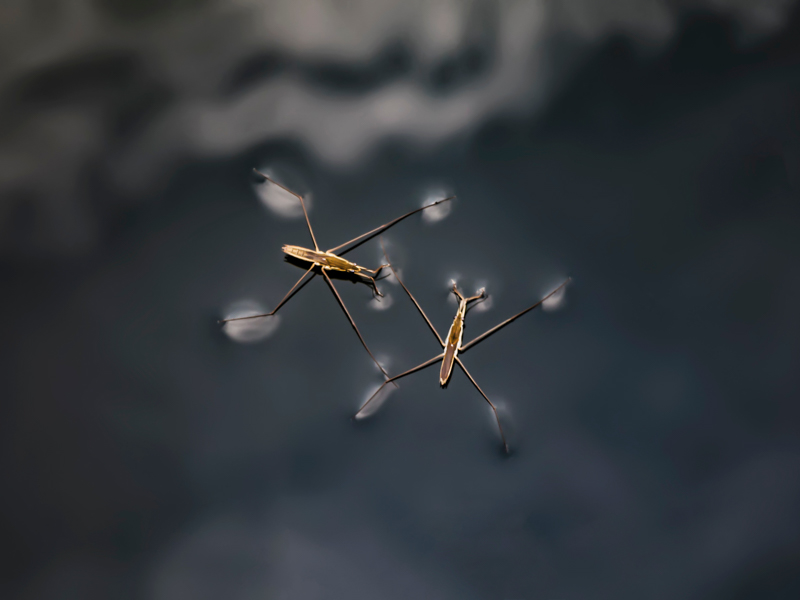Science At Home! Water Tension Experiment
For immediate release ‐ April 01, 2020
Contact: Jessica Wackes, 919.707.9850. Images available upon request
Are you looking for something to do to keep your brain active and engaged? We’re here to help with Science at Home! Over the next few weeks, we’ll be providing you with fun science experiments you can conduct using commonly found items. You can also visit us at the Museum’s Science at Home page for additional resources! Find a print-out version of this experiment here!
Materials Needed
- Large bowl
- Dish soap
- Black pepper
- Needle or straight pin
- Water
- Optional items: paper clip, tweezers
Experiment Instructions
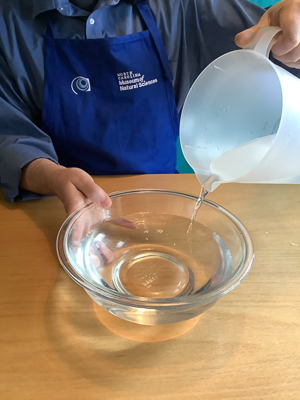
Step 1: Fill the bowl with water. Wait until water is still.
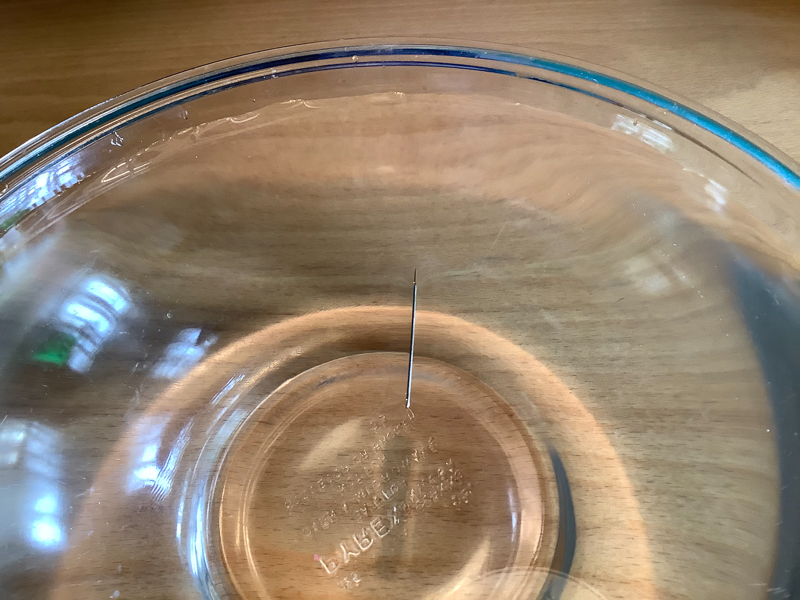
Step 2: With care, place a needle or straight pin on the surface of the water without sinking it. Tip: avoid touching the water with your fingers (this is where the tweezers will come in handy).
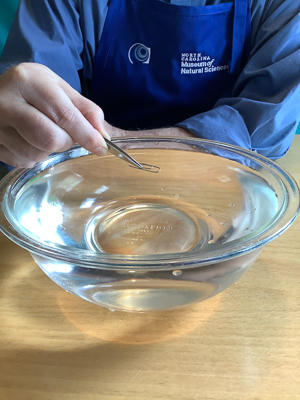
Optional Step: If you are successful with the needle or pin, really challenge yourself by trying to float a paperclip!
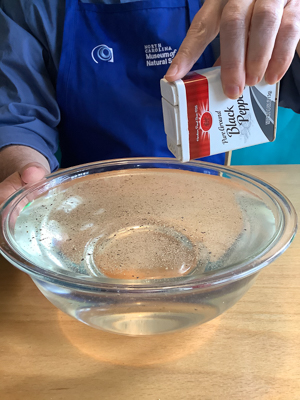
Step 3: Remove objects from water. Then, sprinkle black pepper across the surface of the water.
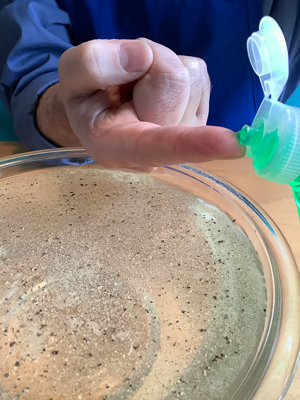
Step 4: Place just a bit of dish soap on your fingertip.
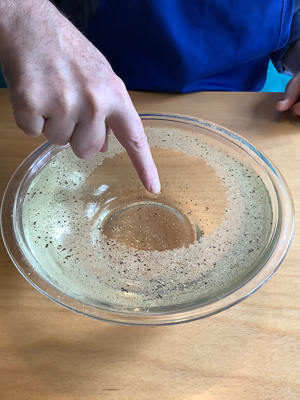
Step 5: Touch the tip of your finger in the center of the pepper-covered surface and watch what happens!
What We’ve Learned
Water forms a skin-like surface called water tension. This occurs because the water molecules at the surface are pulled closer together than the ones directly below the surface.
Natural Connections
Water Striders are insects that exploit this property of water living their entire lives in this unique environment between air and water.
Another insect, a species of Rove Beetle, uses a surfactant (similar in action to the dish soap you used). When threatened, the insect dips its abdomen into the water and exudes a drop of surfactant which interferes with the water tension. The beetle is then quickly propelled by the expanding edge away from a hungry predator, just like the pepper!
Having Fun?
We want to see! Tag @naturalsciences on social media so we can see you and your loved ones enjoying our Science at Home experiments.
Want More Experiments?
Try this one about Water Density!
For more information about our upcoming activities, conservation news and ground-breaking research, follow @NaturalSciences on Instagram, Twitter and Facebook. Join the conversation with #visitNCMNS.


